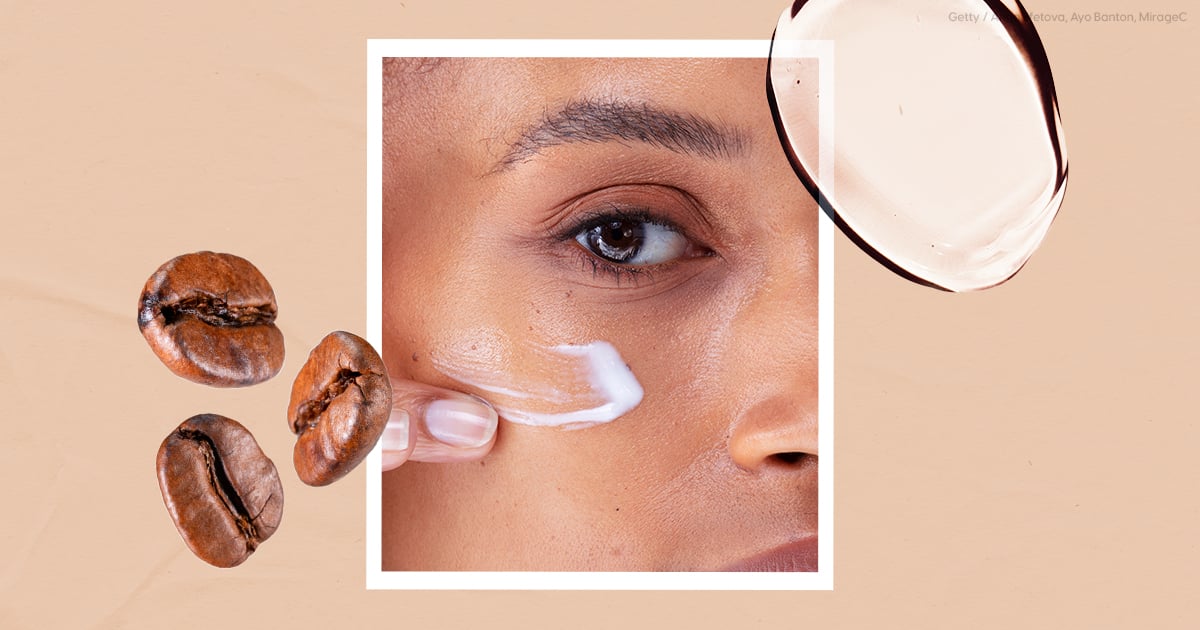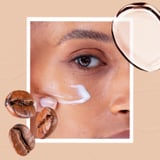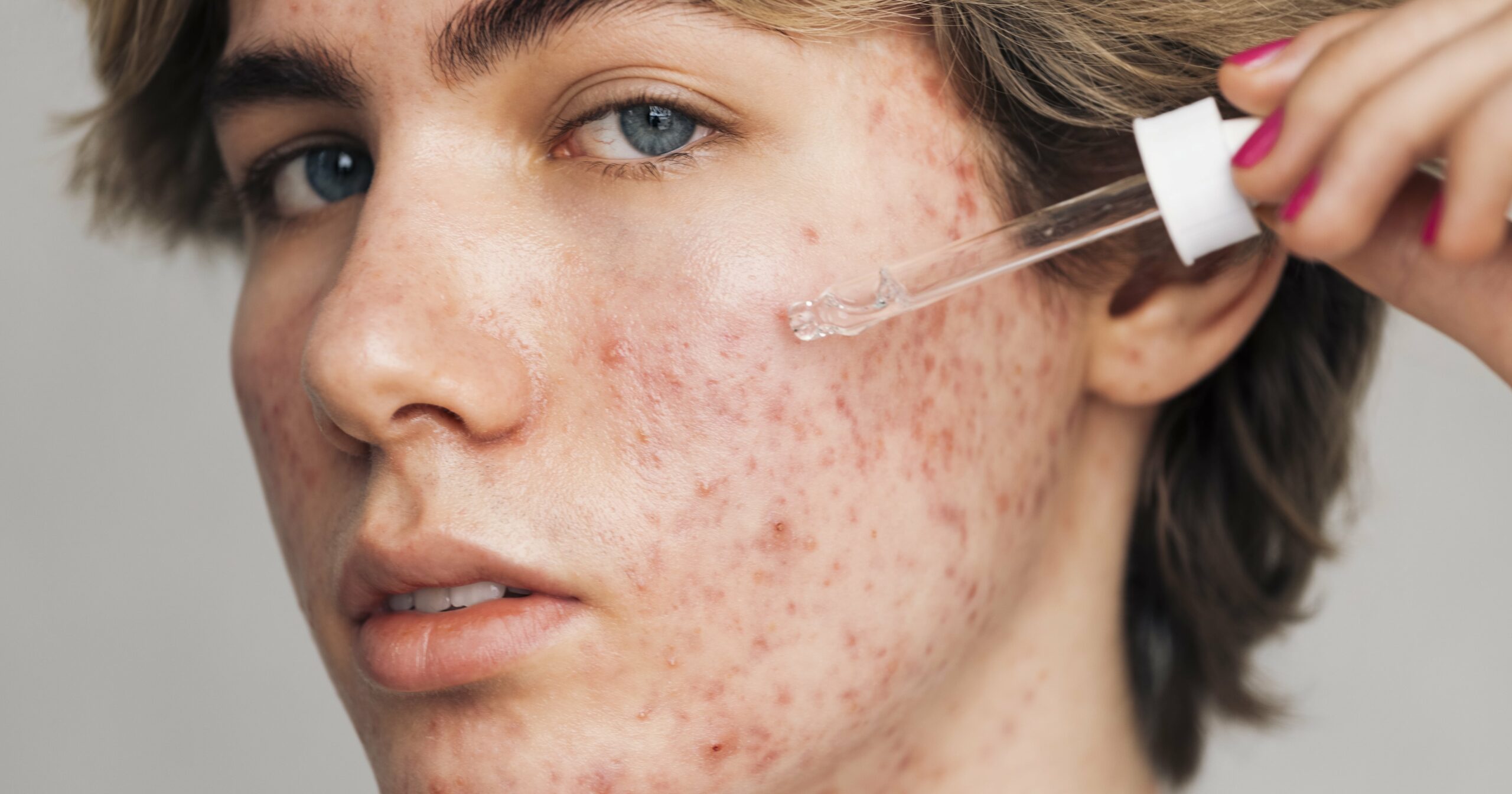It can be hard to decipher which beauty trends are worth the hype and what’s just a nice marketing story. Buzzy skin-care ingredients are always popping up, being touted as the “next big thing,” but it’s important to determine what actually benefits the skin and what’s just added for show. So, what category does caffeinated skin care, fall into?
The brilliant thing about using caffeine as a front-of-pack, let’s-shout-about-it ingredient is that everyone knows what it is, and therefore everyone has a preconceived idea of what it might do for our skin. When you think of caffeine, you think of coffee, right? You think of starting the day with a latte-shaped boost of energy, a cappuccino to get you over that post-lunch slump, or an espresso martini that means you leave the bar feeling wired and stops you from getting to sleep.
But do these wide-awake, get-up-and-go benefits translate if you apply caffeine topically as a part of your skin-care routine instead of drinking it? We asked two leading dermatologists for their take.
Skin-Care Benefits of Caffeine
“When applied topically, caffeine has a number of potential skin benefits, which of course depend on the concentration of caffeine applied and the formulation,” consultant dermatologist Mary Sommerlad, MD, tells POPSUGAR. In short, the formula needs to have the right amount of caffeine in it, and also contain the right supporting ingredients, to work. “To put it in the context of coffee, a mug that contains a tiny splash of coffee isn’t going to energize you like a triple shot – and if it’s not mixed with the right things then any benefits will probably be outweighed by negatives.”
So, what are those potential benefits? “One of the most understood benefits of caffeine include its ability to temporarily constrict blood vessels, which can improve the appearance of dark under-eye circles,” Dr. Sommerlad says. “It also has antioxidant effects, which means it can reduce damage from free radicals.” Free radicals come from things like UV rays, pollution, and cigarette smoke and rob our skin of radiance, trigger hyperpigmentation, and speed up the aging process – so minimizing their impact is always a smart move. “Finally, caffeine is also thought to act as an anti-inflammatory and can help soothe skin.”
These are all brilliant benefits, and the temporary tweaking of dark under eyes definitely ties in with the energy-boosting associations of caffeine. Shielding and soothing feel less obviously linked, but it makes sense that if your complexion is healthy and calm, then it’ll look more vibrant.
Will Drinking Coffee Give You the Same Results?
If caffeine is potentially good at reducing dark circles, protecting our skin from antioxidants, and soothing inflammation, then drinking it is surely only going to supercharge these results, right? “The health benefits of caffeine are a hot area of research at the moment,” Dr. Sommerlad says. “The direct benefits of taking caffeine on the skin are in need of further and more rigorous research.”
From what we do know so far, it’s not quite as simple as it might seem. “Caffeine is a diuretic, so too much without adequate hydration could leave skin dehydrated,” says consultant dermatologist Justine Hextall, MD. “I would definitely recommend balancing coffee with water. In some cases too much caffeine can trigger a stress reaction, and we are aware of the role that the stress hormone cortisol has in driving inflammation, and in some cases breakouts. If caffeine is consumed in excess or too late in the day it may disrupt sleep. Again, we are becoming so much more aware of the absolute importance of sleep for our health in general, and the repair benefits we see in the skin from sleep are considerable.”
“Caffeine can also exacerbate anxiety, and therefore potentially trigger unwanted skin effects such as sweating, blushing, or looking grey,” Dr. Sommerlad says. “It’s fair to sum up that if consuming caffeine dehydrates our bodies, increases anxiety, and stops us from sleeping, then it’s definitely not minimizing stress in the skin or soothing it. Plus, dehydration and a lack of shut-eye are two of the biggest causes of dark under-eye circles.” Sipping on an iced latte might look cute, but it’s not going to leave your skin any better off.
Ingredients With Similar Effects to Caffeine
If you’re in the market for an ingredient that shields skin from free radicals and helps to calm inflammation, caffeine isn’t the only option. “It is similar to applying other topical antioxidants such as vitamin C, E, resveratrol, or green tea,” Dr. Hextall says. Niacinamide gives similar effects too, with the added benefit of helping to balance oil production. If dark circles are a particular bugbear of yours, then all of these ingredients (plus hero hydrater hyaluronic acid) will help to make tired rings less visible.
Look at the ingredients list of skin-care products that contain caffeine and you’ll likely spot at least one or two of these better-known actives in the lineup – which makes it difficult to know exactly which ingredient is doing the heavy lifting in the formula.
“Caffeine works well with a number of ingredients,” Dr. Hextall says. “It can be used to tackle specific skin concerns alongside other ingredients. For example, tired eyes can benefit from hyaluronic acid to temporarily plump the skin and caffeine to constrict, therefore reducing the appearance of darkness. When used with niacinamide and emollients, caffeine can work well for skin that needs soothing, and can have an increased effect when used alongside other antioxidants such as vitamin C.”
Using Caffeine in Your Skin-Care Routine
If you’re interested in adding a topical product with caffeine into your skin-care routine, the formula is king. The ingredient will only work its magic if it’s included at a decent percentage and supported by other ingredients. “Concentrations between one and two percent are most commonly used, but concentrations of up to five percent may also be found,” Dr. Sommerlad says. Not all brands disclose the exact percentage of actives in their products, but you can do a little detective work. Fragrance and the commonly used preservative phenoxyethanol can only be used at a maximum of one percent. So, if caffeine is appearing on the list after either of these, you’ll know the dosage is less than that. If that’s the case, it’s probably only there for marketing.
“Whether topical caffeine ‘wakes up skin’ and what that looks like definitely needs further investigation and discussion,” Dr. Sommerlad says.
– Additional reporting by Jessica Harrington
Jessica Harrington is the senior beauty editor at POPSUGAR, where she writes about hair, makeup, skin care, piercings, tattoos, and more. As a New York City-based writer and editor with a degree in journalism and over eight years of industry experience, she loves to interview industry experts, keep up with the latest trends, and test new products.



